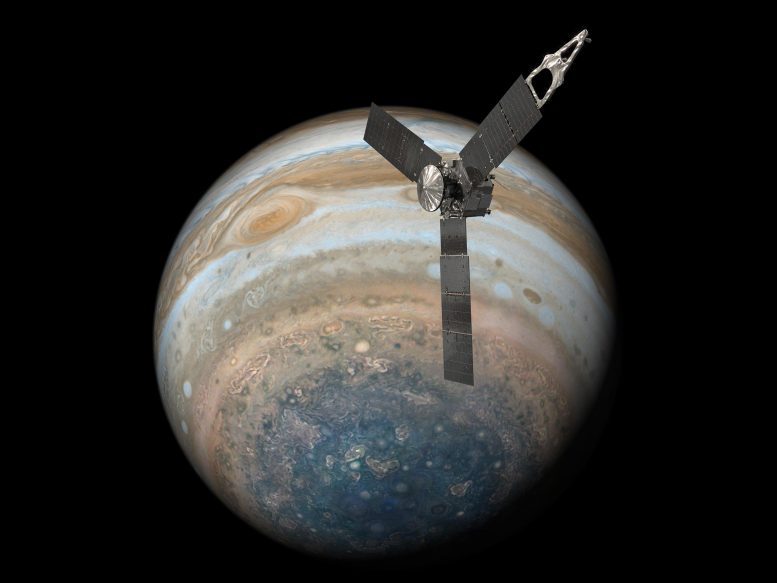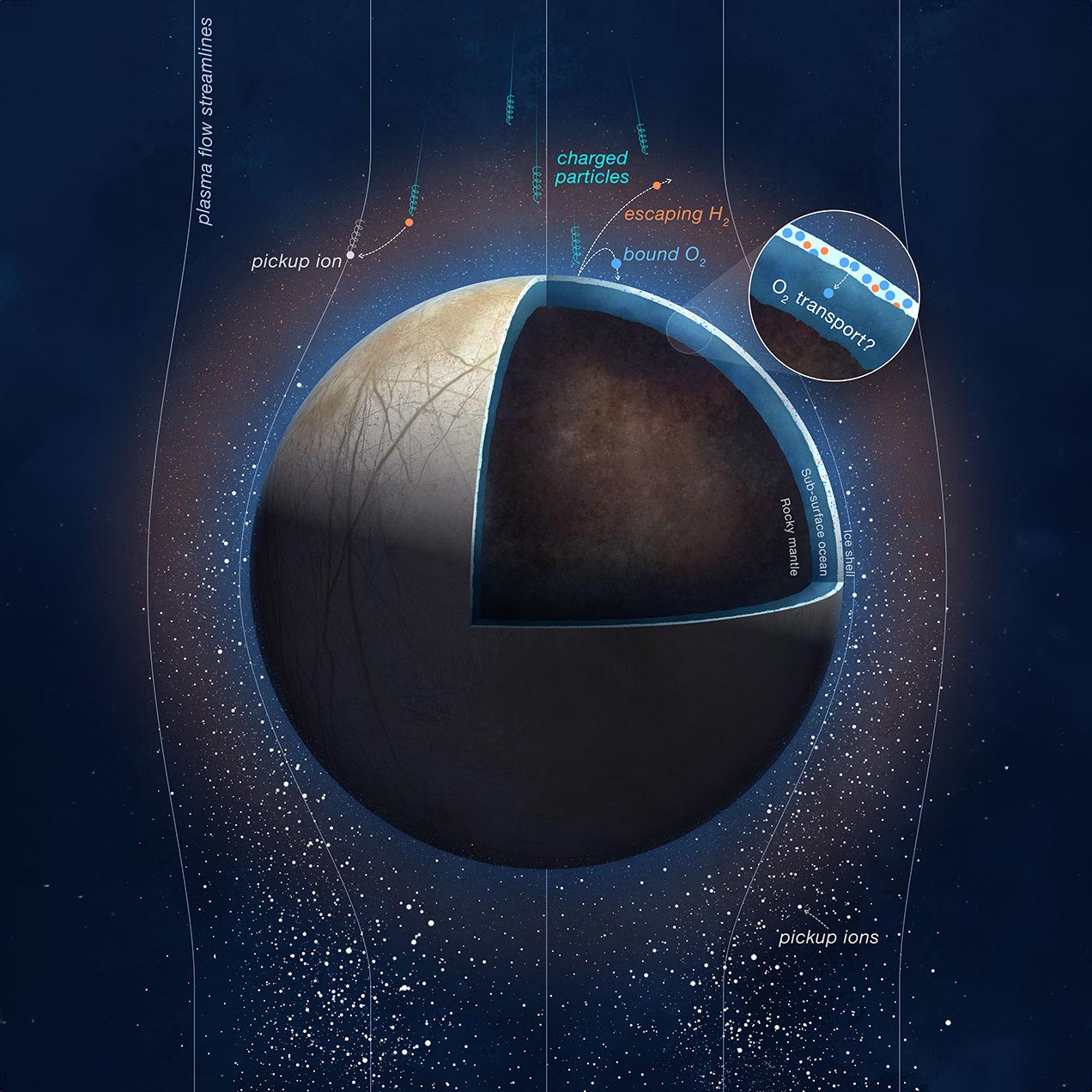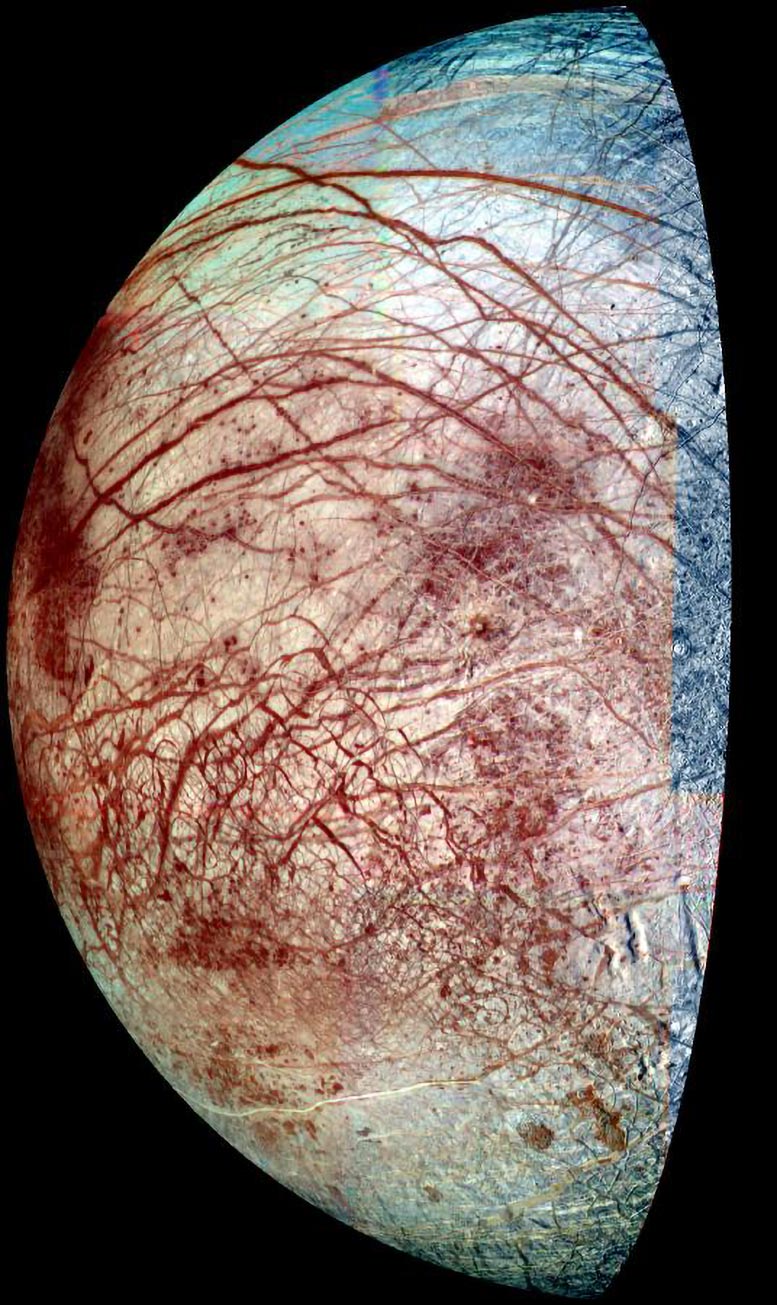
NASA’s Juno spacecraft has provided crucial data on the charged particles in Europa’s atmosphere, revealing insights into its potential for supporting life. This study, involving in-situ measurements of oxygen and hydrogen, brings new understanding to Europa’s environmental conditions and its subsurface ocean’s habitability.
NASA’s Juno spacecraft has directly measured charged oxygen and hydrogen molecules from the atmosphere of one of Jupiter’s largest moons, Europa. According to a new study co-authored by SwRI scientists and led by Princeton University, these observations provide key constraints on the potential oxygenation of its subsurface ocean.
“These findings have direct implications on the potential habitability of Europa,” said Juno Principal Investigator Dr. Scott Bolton of SwRI, a co-author of the study. “This study provides the first direct in-situ measurement of water components existing in Europa’s atmosphere, giving us a narrow range that could support habitability.”
Juno’s Europa Flyby
In 2022, Juno completed a flyby of Europa, coming as close as 352 kilometers to the moon. The SwRI-developed Jovian Auroral Distributions Experiment (JADE) instrument aboard Juno detected significant amounts of charged molecular oxygen and hydrogen lost from the atmosphere.
“For the first time, we’ve been able to definitively detect hydrogen and oxygen with in-situ measurements and further confirm that Europa’s atmosphere is made primarily of hydrogen and oxygen molecules,” said SwRI Staff Scientist and co-author Dr. Robert Ebert.

The source of these molecules is thought to be water ice on Europa’s surface. Jupiter’s rampant radiation breaks H2O’s molecular bonds, leaving behind oxygen and hydrogen. The heavier oxygen molecules remain more constrained to the surface, or near-surface atmosphere, while the lighter-weight hydrogen predominately escapes into the atmosphere and beyond. Oxygen produced in the ice is either lost from the atmosphere and/or sequestered in the surface. Oxygen retained in Europa’s ice may work its way to its subsurface ocean as a possible source of metabolic energy.
Europa’s Oxygen Production and Implications
“Europa’s ice shell absorbs radiation, protecting the ocean underneath. This absorption also produces oxygen within the ice, so in a way, the ice shell acts as Europa’s lung, providing a potential oxygen source for the ocean,” said Princeton University Research Scholar Dr. Jamey Szalay, the study’s lead author. “We put narrow constraints on the total oxygen production at Europa currently at around 12 kg per second. Before Juno, previous estimates ranged from a few kg per second to over 1,000 kg per second. The findings unambiguously demonstrate oxygen is continuously produced in the surface, just a good bit lower than we expected.”
“We designed JADE to measure the charged particles that create Jupiter’s auroras,” said SwRI Staff Scientist and co-author Dr. Frederic Allegrini. “Flybys of Europa were not part of the primary Juno mission. JADE was designed to work in a high-radiation environment but not necessarily Europa’s environment, which is constantly bombarded with high levels of radiation. Nonetheless, the instrument performed beautifully.”

The new measurements contribute to a greater understanding of Europa and its environment, open the door for newer, more precise models. The study’s new estimation of how much oxygen is produced within Europa’s surface, for instance, could inform future research related to its subsurface ocean and potential habitability. As these observations provide the first charged particle composition measurements within Europa’s vicinity, they provide an important new window into the moons’ complex interaction with its environment.
“Europa is a fascinating object because scientists are confident a liquid ocean exists in its interior,” Ebert said. “Water is important for the existence of life and can be found in or on objects with varying characteristics. Europa is a good place to search for water within our solar system.”
For more on this research, see Surprising Oxygen Insights From Europa’s Close Flyby.
Reference: “Oxygen production from dissociation of Europa’s water-ice surface” by J. R. Szalay, F. Allegrini, R. W. Ebert, F. Bagenal, S. J. Bolton, S. Fatemi, D. J. McComas, A. Pontoni, J. Saur, H. T. Smith, D. F. Strobel, S. D. Vance, A. Vorburger and R. J. Wilson, 4 March 2024, Nature Astronomy.
DOI: 10.1038/s41550-024-02206-x